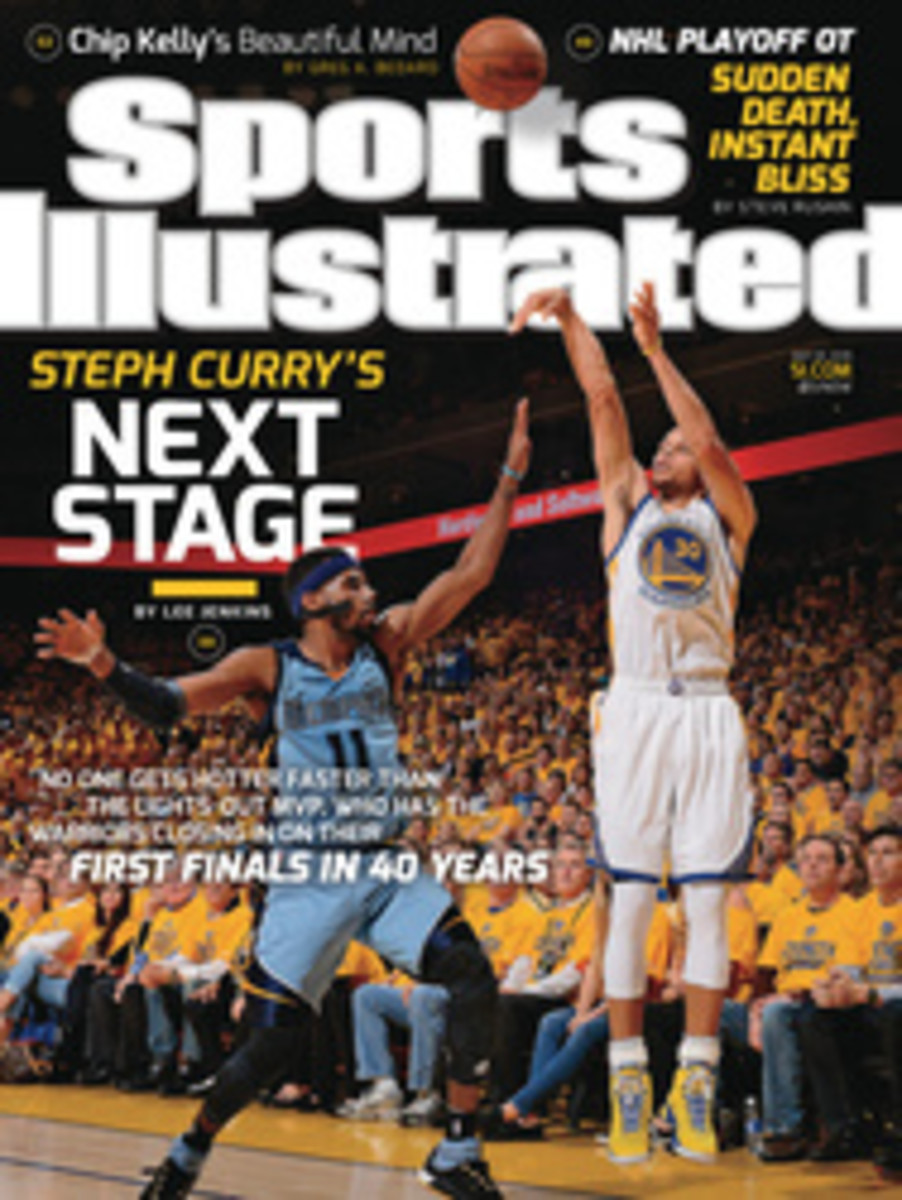
The Case for ... The Pedro
COREY KLUBER DIDN'T throw a no-hitter on May 13, and he didn't complete his start, but the Indians' righthander still had one of the greatest outings any pitcher has ever had. In eight innings against the Cardinals the reigning AL Cy Young winner struck out 18 of the 26 men he faced while allowing just a single hit and plunking a batter. His outing isn't easily labeled, in part because acting manager Brad Mills, filling in for the ejected Terry Francona, yanked him before the ninth. But it was nonetheless historic.
Kluber isn't the only recent pitcher to dominate a game without finishing it. On May 10, the Yankees' Michael Pineda whiffed 16 Orioles without walking a single one in seven innings of work. What Kluber and Pineda did—strike out at least 15 men without issuing a walk—is actually a rarer feat than a no-hitter in the modern game. Since the strike ended in 1995, we've seen 45 no-hitters by 40 pitchers; there have been 23 15-K/0-BB starts, by just 15 pitchers. And it's a much more impressive list of hurlers, led by Hall of Famers Randy Johnson and Pedro Martinez (four times each). Just one of those starts, Clayton Kershaw's last year, was a no-hitter. Eleven times, those pitchers didn't even complete the game.
These games are noteworthy, even if they don't fit into our traditional bins labeled "no-hitter" or "shutout" or even "complete game." Per Game Score, a Bill James concoction that turns a pitcher's box score line into a rating measuring the strength of the outing, Kluber's start was tied for the 10th best since 1995. The very best nine-inning start ever by this rating wasn't a no-hitter: Kerry Wood's 20-strikeout, no-walk one-hitter against the Astros in 1998 scored a 105 on a scale where anything above 90 is a game you remember for a long, long time.
Kluber's performance was more dominant than many no-hitters. He needed help from his defense for just six of the 24 outs he recorded. Contrast that with, for instance, Jordan Zimmermann's final-day no-hitter in 2014, in which he struck out 10. Zimmermann's teammates had to make plays to get 17 outs, including a diving catch by Steven Souza in the ninth. No-hitters are always team efforts, whereas what Kluber or Pineda or Wood did on their biggest days is almost entirely about the pitcher.
Ken Holtzman, back in 1969, threw a no-hitter without striking out anyone. Is that dominant? Or is dominance Pedro Martinez, on the Yankee Stadium mound in 1999, striking out 17 men and walking none in nine amazing innings ... even with a Chili Davis big fly breaking the spell for just a moment. Martinez never threw a no-hitter, but the times he struck out at least 15 men without walking one are just as memorable. No-hitters are pieces of history—we all hope to see one when we walk into a ballpark—but we should celebrate dominance even when it comes with a hit or two attached.
In May 2001, Johnson went nine innings against the Reds. He allowed a run on three hits, struck out 20 and walked none—only the third pitcher in history to do that. Four days later A.J. Burnett threw the only no-hitter of his career, in a start in which he struck out seven and walked nine. I know which one I would have rather watched, hits be damned.
Honoring these combinations of power and precision is consistent with how we evaluate pitchers in the 21st century. statistical analysis tells us that a pitcher controls his strikeouts and his walks far more than he controls what happens after a ball hits the bat. To strike out a lot of men while walking few or none is the pinnacle of great pitching—even if we don't have a word for it yet. Just as a shutout on 99 pitches or fewer has become known as a "Maddux" (a term coined by writer Jason Lukehart), starts of at least 15 strikeouts and no walks should be called "Pedros."
To strike out a lot of hitters while walking few or none, as Corey Kluber did on May 13, is the pinnacle of great pitching.
PHOTO
FRANK JANSKY/ICON SPORTSWIRE

